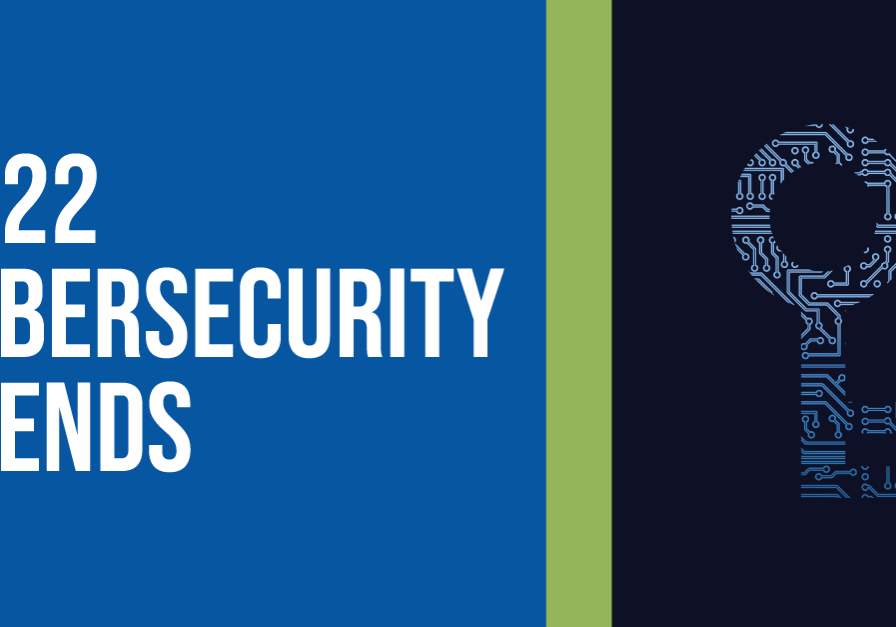2022 Cybersecurity Trends
December 15, 2021
Whether you’re chasing compliance, optimizing operations or reducing overall risk, here are the great 8 cybersecurity trends for 2022 to accomplish your goals.
The State of Cybersecurity in 2022
As we enter 2022, more time separates us from the whirlwind of 2020 and the scramble to secure and manage different environments. Yet, conditions created in 2020 continue to influence cybersecurity trends and projects as security teams work to protect organizations.
The great 8 Security Projects + How to Achieve (with results)
Identity Access Management (IAM)
IAM programs have gained significant traction in recent years, and in 2022 are a must-have. An organization-wide program shifts proactive risk mitigation from networks and devices to people. Gain control by defining and managing roles of who has access to what, no matter where they are physically located. IAM is a true program, not a quick fix.
Luckily, Brite worked with our partner Integral Partners to compile a guide on The Right Way to Create an IAM Strategy and Roadmap.
Accurate Asset Inventory
Take advantage of the new year and kickoff a blind spot-eliminating, accurate asset inventory. We can’t protect what we don’t know exists. For this reason, most of the common security frameworks list asset inventory as control number 1. Implementing the right visibility tool goes beyond device asset inventory and also provides real-time data to make informed decisions, especially when trying to implement a zero trust strategy.
What tool do we recommend for the job? Forescout of course! Forescout’s real-time device visibility, control and orchestration makes it an invaluable cybersecurity pocketknife.
Vulnerability Management
Vulnerabilities: the epitome of cybersecurity and obviously not a new concept. The difference in 2022 is the how they are effectively managed. Risk-based vulnerability management automatically prioritizes the most critical vulnerabilities, so resource strained operational teams understand where to focus efforts. Effective vulnerability management greatly reduces the potential attack surface, yet many organizations struggle to reliably scan and remediate systems. Combine expert appliance configuration, ongoing maintenance, and threat investigation and response for a wholesome approach to vulnerability management.
Remote Access
With our work environment forever changed, we need to secure the remote work systems and their access to critical applications wherever they are hosted. Cloud migrations accelerated in 2020 and 2021 out of necessity. With these changes, increased the need for advanced protection and visibility from Cloud Access Security Broker (CASB) and Secure Access Service Edge (SASE) technologies. With the right execution, your team can re-gain on-premise level visibility, application control and data protection for your remote devices.
Zero Trust
Like IAM, Zero Trust is continuing the narrative of access and placing the attention on users. Zero Trust uses a “never trust, always verify” approach to monitor and validate users, devices and privileges. Instead of the traditional “trust, then verify” method, this ensures that there is no unauthorized access to data by any actor – be it malicious or unintentional.
Again, since Zero Trust is a company-wide program and not a single project, proper planning is necessary for success. Our Guide to Planning a Zero Trust Strategy will help set you in the right direction. Also check out our recent webinar How to Enable a Zero Trust Strategy with Forescout.
User Awareness Training
Have you picked up on a theme yet? Users are becoming increasingly more important in establishing secure defenses. A hands-on, comprehensive training program empowers all users to identify attacks and become a proactive last line of defense instead of a liability. Additionally, as more insurance policies require user awareness training programs, organizations can gain compliance and become more secure with a customized user awareness program.
XDR
Tools are great. We at Brite love a strong tool set. What we don’t love is disjointed alerts that exhaust security teams. XDR rounds out your security approach by normalizing data from any source, correlating that data and then allowing for automated and appropriate response when desired. XDR is what everyone hoped a SIEM would be, effective and actionable. A co-managed open XDR platform allows previously disconnected security tools to be leveraged for quicker incident detection and response.
How do your top priorities for 2022 align with Brite cybersecurity trends?

Posted in Cybersecurity, Cybersecurity Technology, Security (Legacy)
